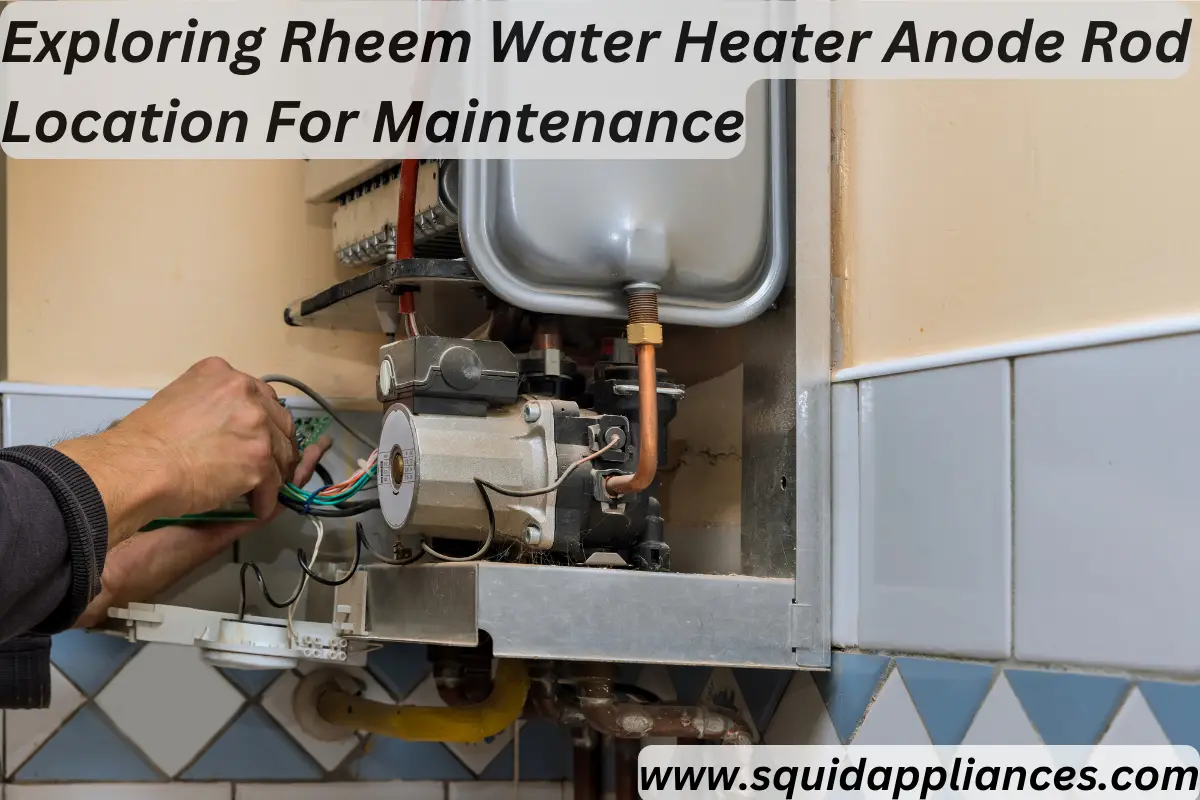In this article, I will be exploring the Rheem water heater anode rod location for maintenance. As a homeowner, it is crucial to understand the importance of the anode rod in maintaining your water heater’s efficiency and lifespan.
How can I Explore Rheem Water Heater Anode Rod Location For Maintenance?
Exploring the Rheem water heater anode rod location for maintenance is covered in detail. This article emphasizes the anode rod’s importance, indicating its location behind a small access panel. Regular inspection and maintenance prevent corrosion and extend the heater’s lifespan, ensuring efficient hot water production and avoiding costly repairs.
Key Takeaways
- The Rheem water heater anode rod is located behind a small access panel.
- Regular inspection and maintenance of the anode rod is important to maintain water heater efficiency and lifespan and prevent tank damage.
- Signs of wear and tear on the anode rod include corrosion and mineral buildup.
- Routine maintenance tasks include cleaning or replacing the anode rod if necessary and flushing the tank annually.
Importance of the Anode Rod in Water Heater Maintenance
The anode rod is a crucial component in maintaining the longevity and efficiency of your Rheem water heater. Regular maintenance is important to ensure its proper functioning.
The anode rod works by attracting corrosive elements in the water, preventing them from damaging the tank. Over time, the rod becomes depleted and needs replacement.
Locating the Anode Rod in Your Rheem Water Heater
To easily find where to check on your Rheem water heater’s anode rod, simply look for a small access panel.
The anode rod is a crucial component in maintaining the longevity and performance of your water heater. It prevents corrosion by attracting electrolysis and sacrificing itself to protect the tank.
Inspecting the Anode Rod for Signs of Wear and Tear
Take a moment to check out the anode rod and witness its battle scars, reminding you of the vital role it plays in safeguarding your beloved hot showers.
Replacing the anode rod: Regularly inspecting and replacing the anode rod is crucial for maintaining the efficiency and longevity of your Rheem water heater.
Anode rod maintenance tips: Keep the anode rod clean and free from sediment buildup by flushing the tank annually. Consider using a magnesium or aluminum-zinc alloy anode rod for better protection against corrosion.
Performing Routine Maintenance on Your Rheem Water Heater
Start by checking the pressure relief valve on your Rheem water heater, ensuring that it’s functioning properly and releasing any excess pressure like a soothing sigh of relief. To maintain water heater efficiency and prevent breakdowns, regular maintenance is crucial. Here is a table to guide you:
| Maintenance Task | Frequency | Benefits |
|---|---|---|
| Flushing Sediment | Annually | Improves heating efficiency |
| Inspecting Anode Rod | Every 2 years | Prevents corrosion and extends lifespan |
| Checking for Leaks | Monthly | Avoids water damage and high energy bills |
Extending the Lifespan of Your Water Heater with Anode Rod Care
Regularly caring for the anode rod can help extend the lifespan of your water heater and keep it running smoothly.
By performing routine maintenance on your Rheem water heater, you can prevent common issues that arise from neglecting anode rod care. These include corrosion, sediment buildup, and reduced heating efficiency.
Frequently Asked Questions
Can I use a different type of anode rod in my Rheem water heater?
Yes, you can use a different type of anode rod in your Rheem water heater. However, it is important to ensure compatibility with the specific model and consult the manufacturer’s guidelines for alternative options.
How often should I replace the anode rod in my Rheem water heater?
To check the condition of the anode rod in my Rheem water heater, I should inspect it for signs of wear such as corrosion or a thinning rod. If it appears worn out, I should replace it promptly to maintain optimal performance.
What are the consequences of not inspecting or maintaining the anode rod in my Rheem water heater?
Neglecting anode rod maintenance in my Rheem water heater can lead to serious consequences. Regular inspection is crucial to ensure the rod’s effectiveness in preventing corrosion, extending the lifespan of the heater, and avoiding costly repairs or replacement.
Are there any specific tools or equipment needed to perform routine maintenance on the anode rod?
To perform routine maintenance on the anode rod, you will need a wrench or socket set to remove and replace it. It is essential to have these tools to ensure proper inspection and replacement of the anode rod.
Can I perform maintenance on the anode rod myself, or should I hire a professional?
I can perform anode rod maintenance myself. It is a straightforward process that requires basic tools. Hiring a professional for this task is unnecessary and would incur an additional anode rod maintenance cost.
Conclusion
In conclusion, maintaining the anode rod in your Rheem water heater is essential for prolonging its lifespan. By regularly inspecting and replacing the anode rod when necessary, you can prevent corrosion within the tank and ensure optimal performance.






